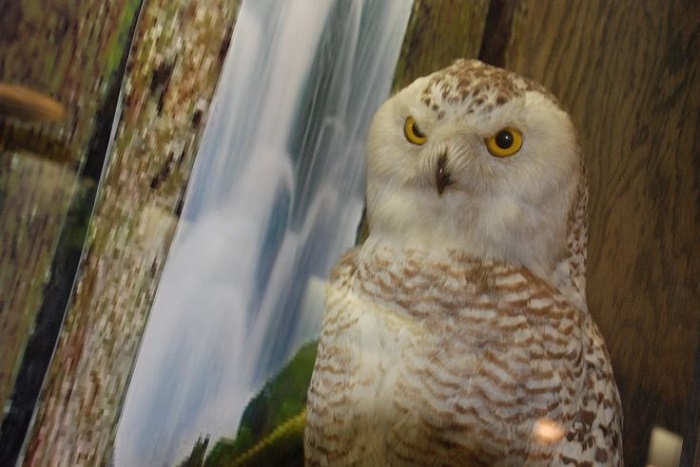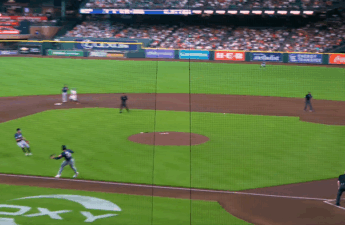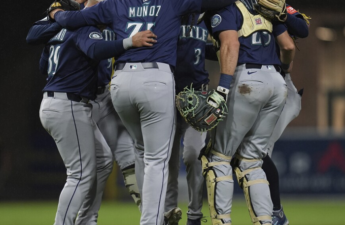
A giant glass case crammed with taxidermy birds stands just outside the classroom where, in three hours’ time, I will begin teaching at West Virginia University for the first time. Overhead, resplendent avians of prey, wings outstretched, clutch equally dead mice in their rigorous talons, threatening to drop them unceremoniously on the living below. A rolling blue wave of a text declares “Almost Heaven, West Virginia.” Severed mammal heads protrude from every wall.
The entire display, which goes on to include a fearsome badger brandishing teeth, a freestanding black bear mother and cub, and a case of ducks beside their specifically tailored decoys, is WVU’s Museum of Natural History. It is at once a devotional testament to the “wild, wonderful” fauna of the state’s mountainous forests and a monument to man’s dominion thereof, its steady conquest by hook, line, and bullet. The concourse, backdropped by windows revealing rolling lawns and campusy buildings, offers large comfortable lodge chairs ‘neath a chandelier made entirely of antlers. I share the same revulsion/attraction mix to this space that I do to all vestiges of America’s historical intersection with the great outdoors: National Park lodge lobbies, the Frontier Restaurant, kitschy Western roadside micro-museums. I love and am descended from this rugged frontier culture, appreciate the animals lovingly embalmed and resurrected, yet simultaneously recoil from how the animal corpses were made, from antique firearms up on racks, from the subtle implication of genocide that accompanies how this land came to be known as a frontier in the first place. I don’t know how to reconcile my deep desire to while away an afternoon reading among these beasts with my fervent wish that none of them had been slaughtered to be in this display.
Contradictions, personal struggles, paradoxes: these are good places to dwell when contemplating an introductory English course for classes stuffed with students who will be opening their collegiate academic experience in less than two-hundred minutes. We can ask icebreakers about what you think here, prefer there, or did then, but the truth is always more mixed and complicated. We rarely conform to our own expectations of ourselves, any more than we fit the perceptions of others. No one is just the jock, the clown, the nerd, the popular. An engineering major today is bound for a life in the arts; a poet will become a doctor. I find myself increasingly befuddled by the question of where I’m from even as I prepare to ask it of forty-two others. My trajectory to get to this place and time is even bumpier. Is it going too far to wonder whether this badger wished she could have been a moose, whether that moose eyed the birds overhead in sighing envy? My first real effort at long-form writing, after all, was about a duck who resisted instinct.
Their eyes, undead and unblinking, stare out across the tiled floor – not only at visitors but each other, really only simulating observation as they rest in the former flesh that stubbornly refuses to decay. It is hard not to draw the parallel, uncharitable though it may seem, to a classroom of fresh-faced students, bleary and disheveled, but earnest, hopeful, maybe a little bit scared. They are, after all, a captive audience, enrolled in a graduation requirement to start their post-secondary years. Is the hall of taxidermy a model for success or failure? On the one hand, there is the appearance of rapt attention, no phones in sight, the silent crowd hanging on every word. On the other, ultimate disinterest, disengagement, and an inability to absorb any wisdom conveyed or expressed. Of course it’s failure. These animals can no more draw from our communication than we can hear their silent pre-death plea for mercy. The concourse stands as a monument to our utter inability to bridge the divide between species, to project our own self-certainty onto the consciousness of those whose hills we occupy.
For my students, if you’ve stumbled your way here somehow, please don’t think I see you as a taxidermy falcon or head of antelope, nor that I aspire for you to reach this level of untwitching focus. Indeed, there is a cautionary tale of rote education buried under these feathers and fur. The goal of any educator, especially one steeped in competitive debate and public speaking, is to achieve not only three-dimensionality, but vibrant animation. This project only works if you care, if you move, if you breathe life into the space, to borrow from the last competitive round I coached. Nor do I hope you leave English 101 feeling as captive as the former West Virginia natives outside our classroom door. The university requires you to do certain things for a reason and, while you may not see it yet, these are opportunities more than obstacles. Yes, of course I would be inclined to say that, but you should trust me anyway.
If nothing else, I’ll have an instant verdict when I leave the room on the verge of afternoon. If the place I left too closely resembles what’s just outside it, I will have failed you. Glassy eyes, incomprehension, limbs unmoving, thoughts unmoved. These are my reminders to do better, do more. I cannot unsee them, cannot make it to the door without acknowledging their firm still presence. The goal of writing is to communicate and connect, to capture a feeling or thought, a place or moment, and preserve it for future understanding and use. But it cannot be inert and unchanging. It only works if the process of preservation also distills the lifeforce residing inside.
Let’s begin.


